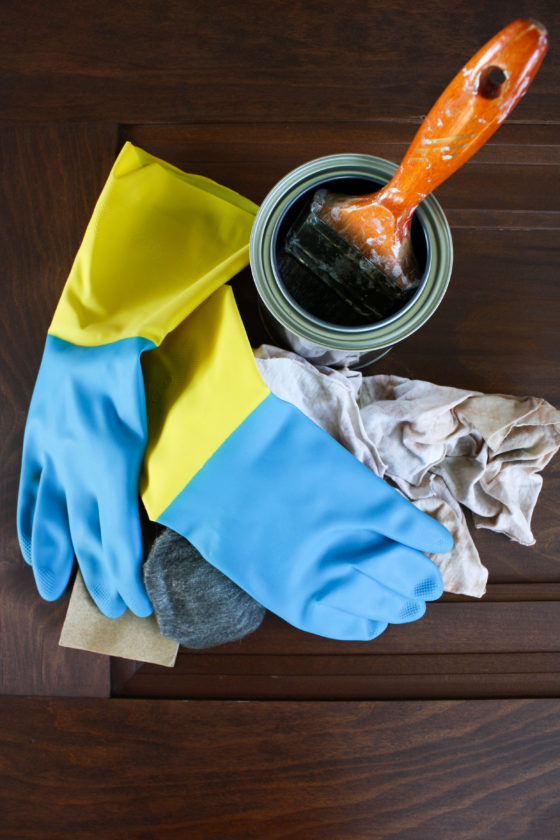Did you know that oily rags can ignite without a spark? That’s exactly how one family’s garage burned down. No one was hurt, but they learned a tough lesson.

Photo credit: iStock.com/urbandesignstudio
Are you planning on painting your house or doing some staining? If so, please remember to be careful with any oily rags you may have left over. If you just throw the rags into a pile, they could catch fire from spontaneous combustion, which can have disastrous consequences. Someone who knows about this first-hand is a homeowner I’ll call “Emma.”
Emma describes what happened after she and her husband finished staining their fence with a linseed-oil stain one Sunday evening.
“We threw the oil-stained rags together into a plastic recycling bin that sat in the front corner of the garage. There was already a bunch of crumpled paper in the bin, so we just threw the rags on top. And this was the big mistake we made: improperly disposing of oily rags.”
The fire started about 24 hours later. It was on the other side of the house from where Emma was helping her son with his homework. Says Emma: “I went downstairs to answer a loud knocking on the door. When I opened the door, I looked past our yard out onto the road, and saw a throng of people gathered just beyond the entrance to our driveway. They were yelling at me to get out of the house.”
That’s when Emma looked to her right and saw flames shooting out of the garage. She and her son both left the house immediately. Thankfully, no one was hurt in the blaze, but the garage was destroyed and took over a year to rebuild.
Emma says: “We learned a lot from our mistakes. Needless to say, as new homeowners we were pretty green about the DIY life back then.” She now realizes the importance of thoroughly reading the warnings on the can and never leaving oily rags in a pile. She now knows how to properly dispose of oily rags: put them into a metal container with water at the bottom and secure the lid.
What is spontaneous combustion?
Spontaneous combustion is a chemical reaction between oxygen and an oil-based substance on a combustible material (like a rag). It leads to fires, with no spark or flame required.
“In the case of oily rags, it’s a relatively simple process of oil oxidizing generating heat, which if not dissipated, will build up until combustion occurs. Generally, this can happen when the materials are left in piles, which provide a source of insulation, trapping the heat that is generated,” reads Fire Safety Guidance for Oily Rags from the Harrington Group (a safety engineering firm).
Spontaneous combustion of oily rags also led to a recent fire at a B.C. wood manufacturing plant. Again, no one was hurt, thankfully. It happened after everyone had gone home – about three hours after some used wiping rags were placed in a waste container. The blaze destroyed the main shop and damaged surrounding structures.
For more information about preventing spontaneous combustion, also see Reducing the risk of spontaneous ignition fires in laundries, a bulletin from WorkSafeBC, and Safety With Oily Rags, from the U.S. National Fire Protection Association.


